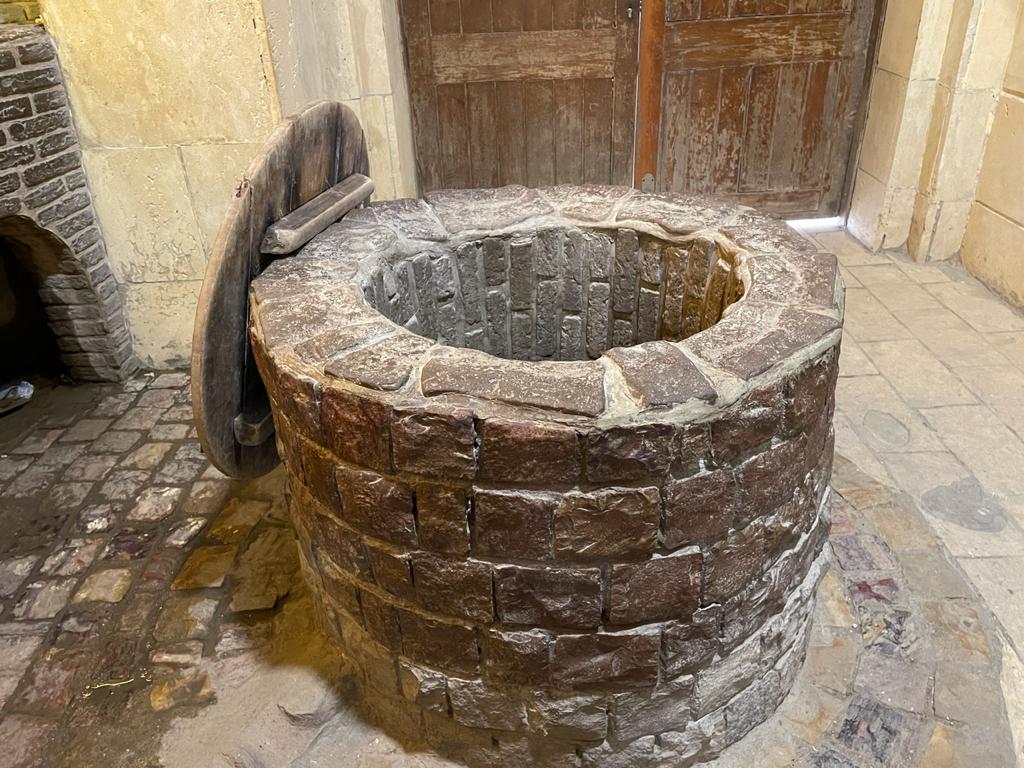The Church of the Virgin Mary was built there in 1185 AD in the Byzantine style with domes and built with thick walls. The church building consists of a nave, three sanctuaries, a cave and a well. The ground floor of the church is old and was renovated in the twelfth century AD, while the upper part was built during the time of Pope Cyril V in the late nineteenth century. The church was renovated from the outside in the period between 1984 AD and 1987 AD. In the year 2000 AD, the church was completely renewed during the time of His Holiness Pope Shenouda III, on the occasion of the celebration of the 2000th anniversary of the birth of Christ and the Holy Family’s journey to Egypt.
There are three sanctuaries in the church, the middle one is in the name of the Virgin and has an iconostasis dating back to the year 1500 of the martyrs / 1784 AD as it is written on it. On the top of the iconostasis, there are four pictures of four angels and in midst of them is the image of the Virgin carrying the baby Jesus, as well as four pictures of the four evangelists. The southern sanctuary is in the name of the great martyr George, and the northern one is in the name of St. John the Baptist, and in front of each of them there is an icon holder. Above the first is a group of pictures representing the journey of Passion, Resurrection, and Maundy Thursday to Ascension. Above the second is a group of pictures of the twelve disciples, and in the midst of them is a picture of the Lord Jesus Christ, on his right is the Virgin Mary, and on his left is St. John the Beloved.
The church includes many rare ancient icons, including: an icon of the Holy Family entering Egypt dating back to the sixteenth century AD, and another icon in which the upper half depicts the stoning of St. Stephen, and the lower half depicts the martyrdom of the Prophet Isaiah by cutting his body with a saw. There are also the icon of Saint Demiana and the forty martyrs, as well as an icon of the Virgin, Prince Tadros and Marmina, an icon of Saint Abskhiroon al-Qalini and another of Saint Anba Behnam and his sister Sarah. There are also a number of ancient icons painted on both sides, dating from 150 to 350 years, such as the icons of Anba Beshay, Anba Bishoy, Anba Shenouda and Abu Makar.
The church building is surrounded by two large courtyards surrounded by many service buildings, the largest of which was opened a short time ago, and it contains many Sunday school classes, a nursery, a social development office and many other activities.
The Holy Well

The holy well, which sprang with the blessing of the Child Jesus, is located to the left of the church northern entrance and adjacent to the cave where the Holy Family rested.
Tradition says that this well still contains the water that the Lord Jesus Christ spurted and bathed in as a small child, and the Virgin washed His clothes from its holy water, and the water of this well never runs out. Sometimes it is filled with water, then the water level returns to normal, and this water has a distinct taste that differs from the water of the Ismailia Canal, which is not more than 60 meters away from the church. This water of the holy well is considered a reason for blessing, and has healed many sick people and everyone who drank from it with faith.
The Cave

It is located to the left of church northern entrance, next to the well. It served as a shelter for the Holy Family as they rested in it during their journey in Egypt.
The monuments in this area indicate that the cave was located in a temple or the ruins of a temple built during the days of Ramses II.










